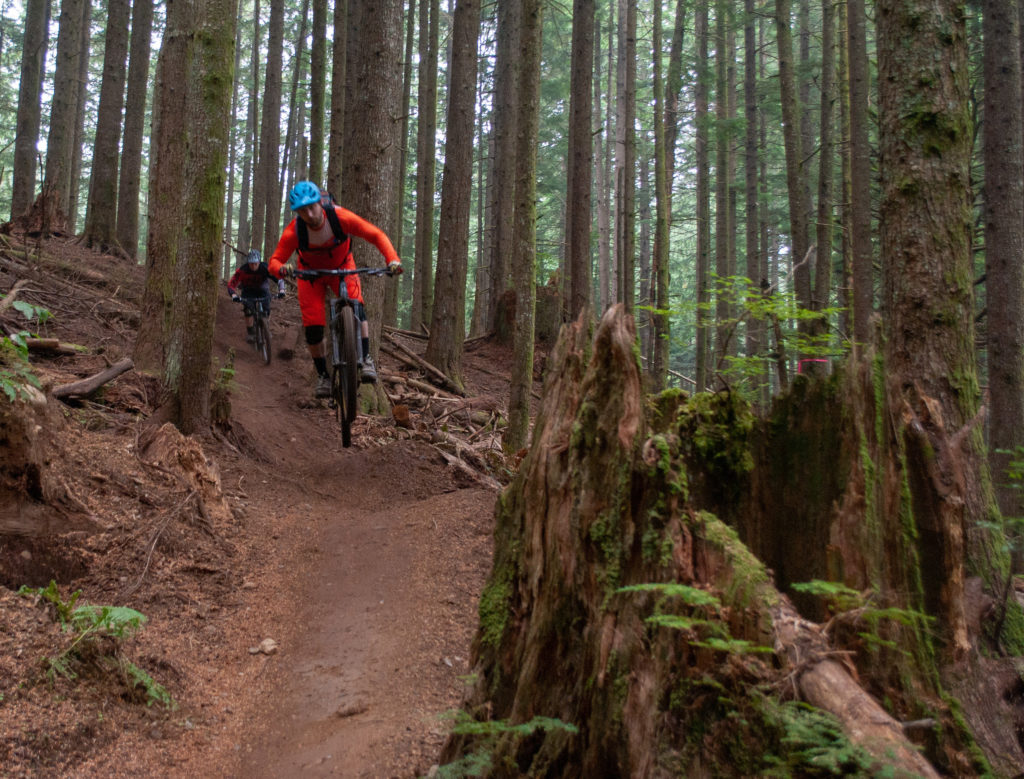Clearing Jumps

I often hear riders talking about ‘not having gone fast enough’ into a jump they were unable to successfully clear. While speed is one component of jumping successfully, we can actually jump the same jumps at many different speeds, all with the same outcome in terms of distance.
What affects us most when jumping isn’t outright speed, but whether we are accelerating, decelerating, or moving at a constant speed. Of course we can use other, more advanced techniques such as scrubbing to allow us to hit jumps at higher than normal rates of speed while not over-jumping, as we are able to blow off energy by turning up the jump. But for the sake of this particular post, we are going to focus on the basic element of creating acceleration into a jump so that we aren’t completely reliant on hitting jumps at super high speeds in order to clear them.
When I’m teaching on jump lines in bike parks, I often follow riders and watch them repeatedly come up short on jumps. When we get to the bottom, they typically apologize for making me come up short as well. In most instances, I’m actually able to clear the jumps at the speed they are going by creating some last-second acceleration up – and compression into the jump ramp. Often riders end up decelerating while jumping out of fear or intimidation. This is often because they are approaching a given jump much more quickly than they might need to with proper technique. Riders often grab some brake right before the jump or move slightly back from center on take-off. Both of these actions create deceleration and less-than-optimal flight distance for the speed they are traveling.
Think of the analogy of motocross. Imagine a rider approaching the same jump with three different approaches, but hitting the lip of the jump at the same speed of 30mph. A rider approaching at 30mph and keeping a constant velocity will travel further than a rider approaching at 40mph, then braking into the jump face. A rider approaching the jump at 20mph, then hitting the throttle up the jump will go further than either of the first two. While we might not have a throttle on a bicycle, we do have ability to create acceleration by compressing into the curve of the takeoff. This act allows the bike to accelerate, and loads the suspension – and our legs – which then unload on take-off. In order to get this loading and accompanying acceleration, we need to be centered over our feet – standing as we would on ground – perpendicular to sea level. In a moment of fear and uncertainty, riders often ‘back away’ from the jump, which reduces compression and its cousin, acceleration.
When I’m teaching riders who are struggling with distance, I typically have them slow down into jumps that are safe to come up short on (start with table top jumps – not doubles). The act of slowing down well before the jump gives them the confidence needed to ‘stand into’ the jump with hips squarely over feet. This usually results in more distance with less speed, and a very happy rider.
To start working with this, be sure to find jumps suitable for your level, and safe to come up short on. Gradually slow down and try to stay active over your own feet. Before you know it you will be jumping big jumps cleanly without fear.
